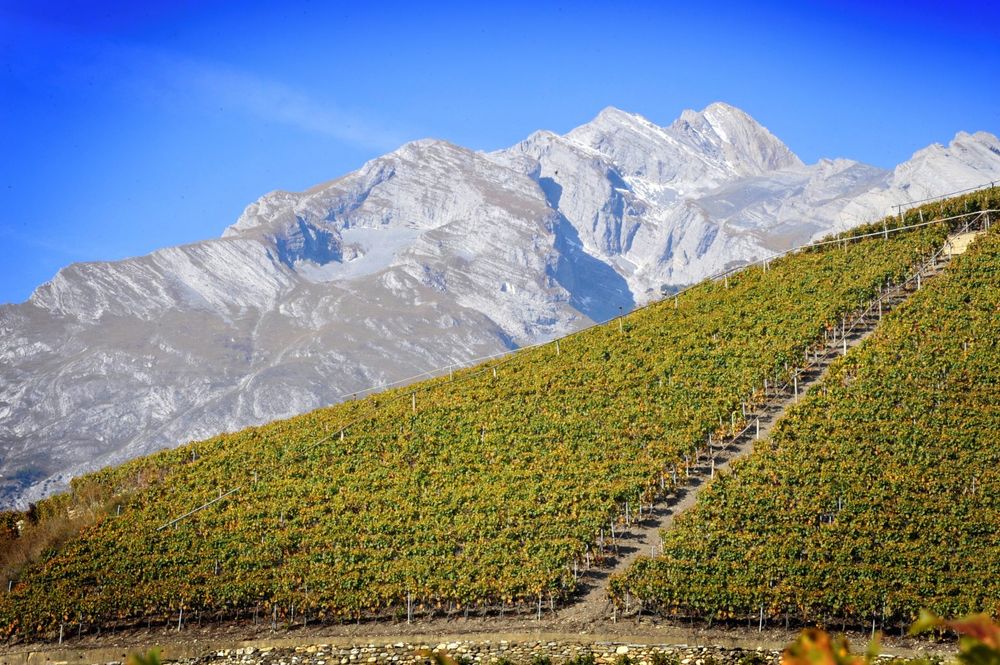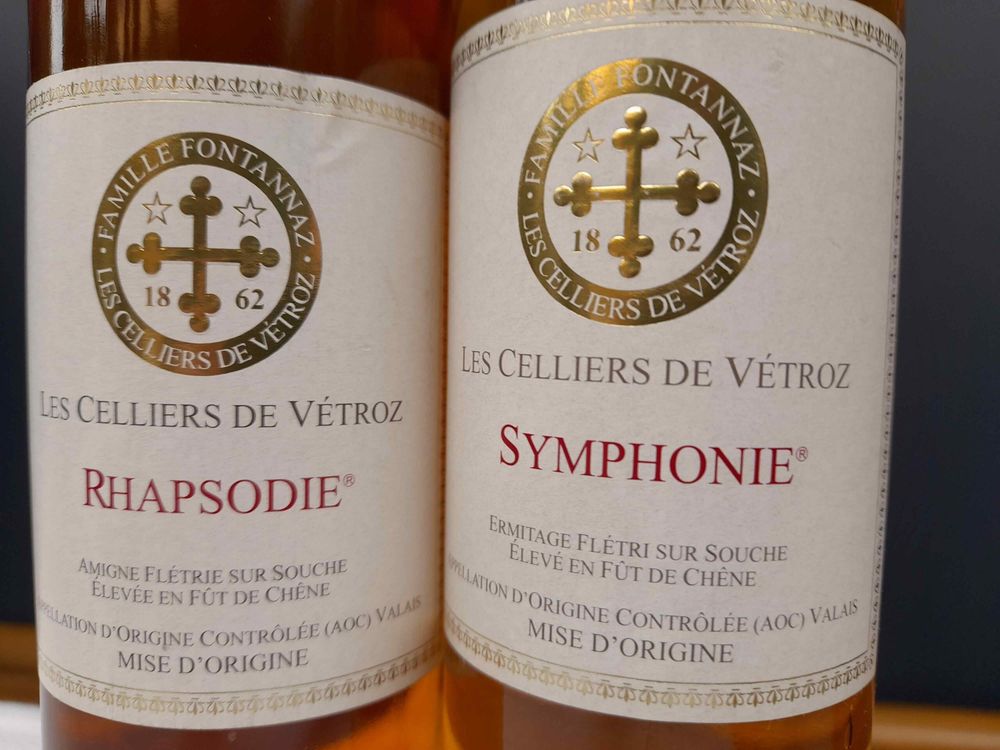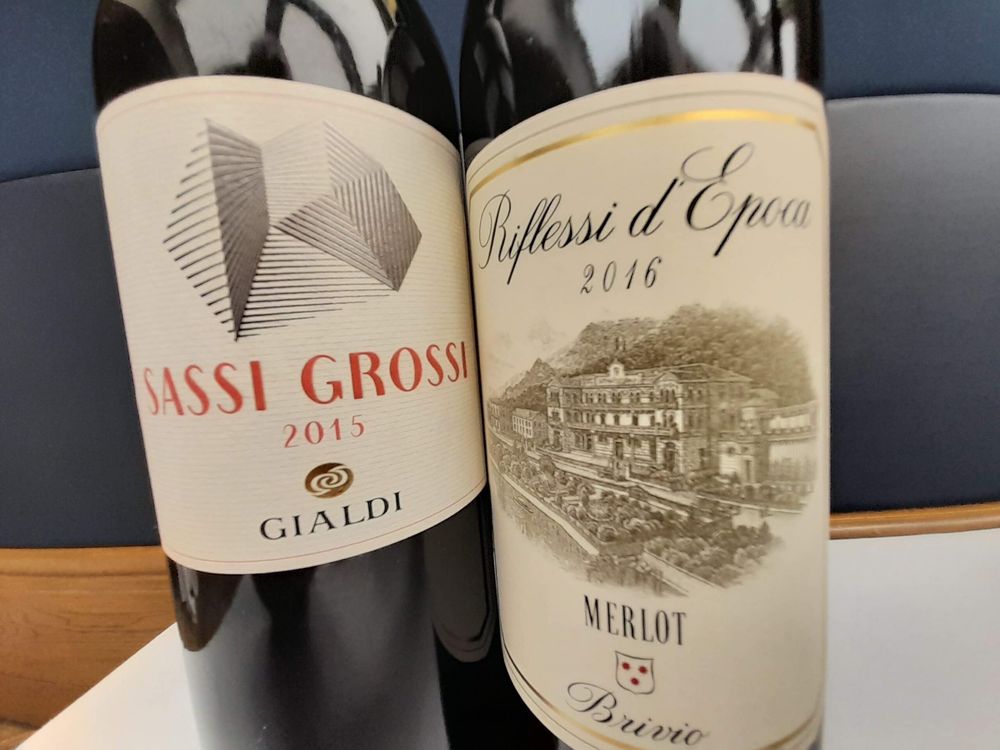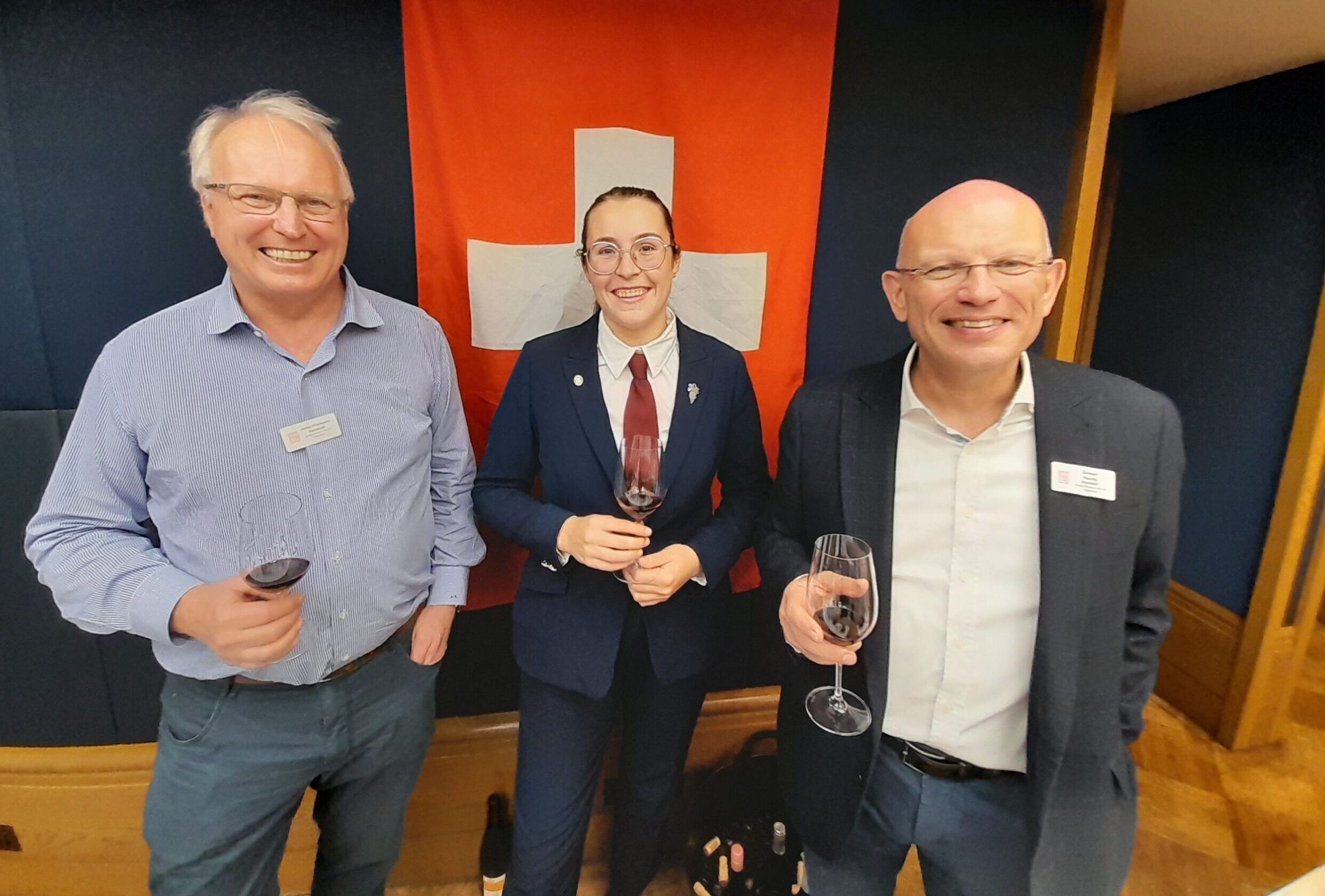“We’re not expecting Swiss wines to appear in Waitrose, M&S or Sainsbury’s… but with the right selection of wines and with the right event targeting the right potential customer it’s a step in the right direction,” says Simon Hardy.

Over 20 producers took part in the Swiss Wine tasting, October 3, 67 Pall Mall
Exports of Switzerland’s wines have seldom got above 2% of total production, but Britain continues to receive some of the best and the most interesting. That was apparent at Swiss Wine in the UK’s first live trade tasting since Covid, in early October at 67 Pall Mall in London. Three-quarters of attendees were buyers, which reflected the fact that as many as 68 retail shops in the UK sell some Swiss labels.
“Before Covid, only half of those who came to our trade tastings were buyers, with the other half being wine writers,” said Jean-Francois Genoud, who project-leads Swiss Wine in the UK. “So I think that is a sign of the growing interest here in our wines. The image we have abroad is important. Having an image in London, New York, and Tokyo helps internally – that the wine we have is recognised abroad. London has always been important as an international place – it’s incredible what’s going on here.”
While Genoud is Lausanne-based, his fellow ambassador for Swiss Wine, Simon Hardy, lives in London, where he revealed as many as 11 restaurants now have Swiss labels on their wine list. The St Moritz Restaurant in Soho is top of the league table with 24 different Swiss wines, closely pursued by the Authentique Epicerie in Tufnell Park with 22.
“Take a private member’s club like 67 Pall Mall,” Hardy said. “They have over 100 different Swiss wines on their list. That’s come from four or five years of steady effort where they can see the demand is there because people are discovering. There’s a big local grape story as well as quality versions of Pinot Noir, Chardonnay and Merlot.
“Here we have what I’d call the more progressive and open-minded producers, who are making great wines but also understand the value of building credibility, reputation and awareness outside their home market. This is a platform for them to get that message out. Obviously that has to be balanced with the availability of the wines. That’s why we’ve produced the distribution directory.” Highly detailed, it lists every restaurant and retail shop where Swiss wines are available, along with the three online retailers – Alpine Wines, Vida Wines and Sip Wines.
With no more than 100 million litres of wine made each year in Switzerland, where 250 million litres are drunk annually, exports are always going to be limited. For the record, though, there are 62 Swiss AOCs and 252 different grape varieties planted across 14,696 hectares. Pinot Noir is the most planted black grape, and Chasselas the most planted white.
So how were the Swiss wines tasting?

The tasting featured Roman Hermann’s outstanding Pinot Noir Grand Maitre 2020 from the Bundner Herrschaft, a renowned sub-appellation for the varietal, although he is nicknamed ‘The king of whites’ for his superb Chardonnays. He and fellow top Graubunden producer, Martin Donatsch, also make Completer, a rare indigenous white varietal of which there are only eight hectares planted in Switzerland. Aromas of quince, plum and honey were clear on tasting along with racy acidity.
A trio of indigenous whites from leading Valais winemaker, Robert Taramarcaz, owner of Domaine des Muses, also showed particularly well – Humagne Blanche (fresh with lime notes), Petite Arvine (grapefruit notes) and Chasselas (aka Fendant). Meanwhile, Mathias Bechtel’s Rauschling 2018, made near Zurich from a German varietal that is only really found in German-speaking Switzerland, yielded light citrus notes with vibrant acidity.
Other Chasselas to impress included Les Frères Dutruy’s refined Dézaley Grands Cru Les Terrasses 2020; Henri Cruchon’s Champanel Grand Cru 2019; and Louis Bovard’s Aigle Cuveé Noé 2018. Bovard, 80, was the first Lavaux producer to keep his barrel-fermented Chasselas on the lees much longer than usual. In 2010, he founded the Conservatoire Mondial du Chasselas where 19 different types of the varietal are cultivated and vinified separately.
Luc Massy is another longtime leading producer of Chasselas. His Clos du Boux Grand Cru Epesses 2020 and Chemin de Fer 2020 were amongst personal favourites at the tasting, along with Domaine de la Pierre Latine’s Reserve du Clos du Crosex Grillé, a legendary Vaud grand cru vineyard with an illustrious history.

Two sweet whites that caught the palate were produced by Les Celliers de Vétroz in Valais. Symphonie 2014 (100% Marsanne), had massive concentration while Rhapsodie 2012 was made from another indigenous Swiss grape, Amigne. First mentioned in 1686 as growing near the town Vétroz, where nearly all current plantings are concentrated, it has complex orange zest notes, with fresh acidity to counter residual sugar of almost 200 g/l. Five Fontannaz brothers and their sister run the estate, which was founded by their parents Jean and Yvette.
Another Valais producer, Jean-René Germanier, exhibited an impressive range of reds, including two different labels of Humagne Rouge and two of Cornalin. Red fruit and soft tannins were evident. Germanier’s Cayas Syrah du Valais Reserve 2017 was excellent, with lovely notes of spice and white pepper as well as real concentration and length.

Two Merlots from the Ticino appellation, where the grape has flourished, were among several to impress – Gialdi Vini’s Sassi Grossi 2015 and Brivio Vini’s Riflessi d’Epoca 2016. Another was Louis Bovard’s Dézaley Grand Cru 2017, while his Dézaley Rouge 2017 was a 50/50 blend of Merlot and Syrah. Similarly powerful and spicy was Henri Cruchon’s Gamaret 2018, a cross of Gamay Noir and Reichensteiner that was made in 1970 at Lausanne.
The little-known Swiss varietals like Gamaret will doubtless be the preserve of connoisseurs searching them out in specialist wine stores. “We’re not expecting Swiss wines to appear in Waitrose, M&S or Sainsburys,” Hardy professed. “It’s part of the conundrum of Swiss wines – relatively little exported, hard to find, and local indigenous grapes that nobody has heard of. But with the right selection of wines and with the right event targeting the right potential customer, such as this trade event today, it’s a step in the right direction.” A hugely enjoyable tasting certainly felt like that.






























